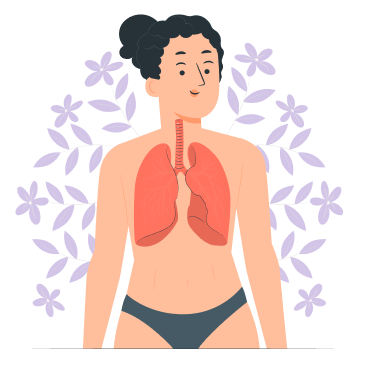Lung cancer is the leading cause of cancer deaths among adults in the United States. The risk increases with age, and older adults are at a higher risk than younger adults. Similarly, those who smoke are at a higher risk of developing lung cancer than those who don’t. Unfortunately, lung cancer is often diagnosed after it has spread, with survival rates ranging between 4.2 and 27.4%. However, thanks to technology and lung cancer program management systems, death rates have decreased over the last decade.
Home > Lung Cancer Screening

Who Should
Be Screened
for Cancer?
The only recommended screening for lung cancer is the low-dose CT scan or computed tomography. The procedure involves using low doses of radiation to take detailed images of your patient’s lungs. It can only be taken by adults at high risk but have no symptoms. Adults who should be screened for lung cancer include:
MagView allows you to use several risk assessment models to assess your patients. The Tyrer-Cuzick v8.0 (IBIS) is one of the most reliable breast cancer risk assessment tools you can use for a professional assessment. The tool checks various family factors, reproductive history, and overall medical history to estimate a patient’s breast cancer risk. You can help your patient fill out the form and submit it to get the score and recommendations instantly. Other risk models include NCI, Claus, NCCCN, BCSC, HERA, and many more.
LungView helps track patients who have undergone the low-dose screening CT by tracking multiple lesions per exam, collecting patient history, and generating follow-up tasks based on each recommendation.
Communication is vital when you have a patient at high risk of lung cancer. LungView's software program helps you communicate effectively with your patients and send them reminders for future appointments. You can send emails, letters, or text messages depending on your patient's preferred method. You can email the results, educate them on care, and recommend living a healthy and lung cancer-free life.
It's up to you to decide whether you will work with the software alone or integrate it with your existing systems. Integration means cutting down your tasks by half, which helps save time that would have otherwise been used to enter, check, update and analyze materials.
LungView helps track patients who have undergone the low-dose screening CT by tracking multiple lesions per exam, collecting patient history, and generating follow-up tasks based on each recommendation.
Get in Touch With Us Today
Our software programs are carefully designed with your needs in mind. We can help you manage your lung cancer screening patients from screening to diagnosis with ease and confidence.
Call us at 800-553-8996 to learn how our systems can help your business.
UPCOMING WEBINAR: Navigating New Regulations in 2024: A Guide to Compliance for MQSA, NAPBC, and MOD
| Cookie | Duration | Description |
|---|---|---|
| cookielawinfo-checkbox-analytics | 11 months | This cookie is set by GDPR Cookie Consent plugin. The cookie is used to store the user consent for the cookies in the category "Analytics". |
| cookielawinfo-checkbox-functional | 11 months | The cookie is set by GDPR cookie consent to record the user consent for the cookies in the category "Functional". |
| cookielawinfo-checkbox-necessary | 11 months | This cookie is set by GDPR Cookie Consent plugin. The cookies is used to store the user consent for the cookies in the category "Necessary". |
| cookielawinfo-checkbox-others | 11 months | This cookie is set by GDPR Cookie Consent plugin. The cookie is used to store the user consent for the cookies in the category "Other. |
| cookielawinfo-checkbox-performance | 11 months | This cookie is set by GDPR Cookie Consent plugin. The cookie is used to store the user consent for the cookies in the category "Performance". |
| viewed_cookie_policy | 11 months | The cookie is set by the GDPR Cookie Consent plugin and is used to store whether or not user has consented to the use of cookies. It does not store any personal data. |